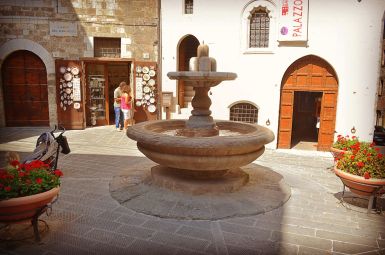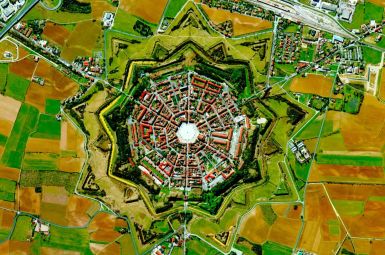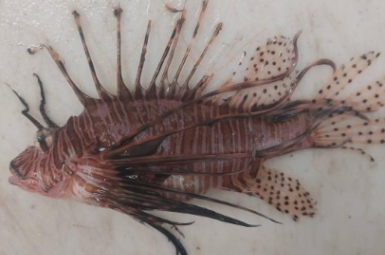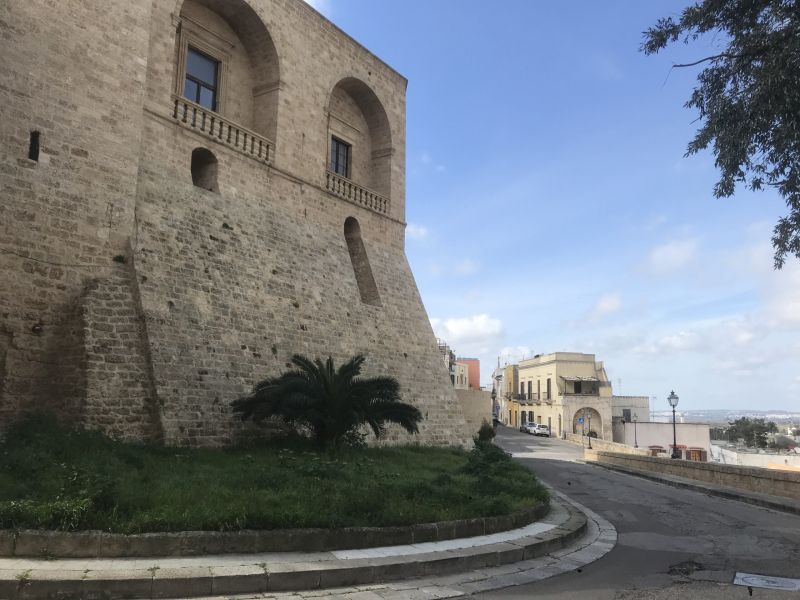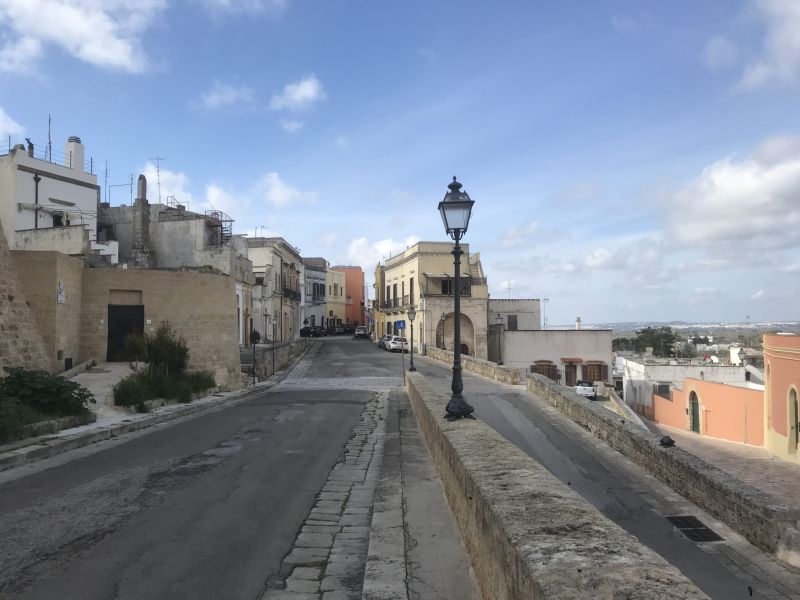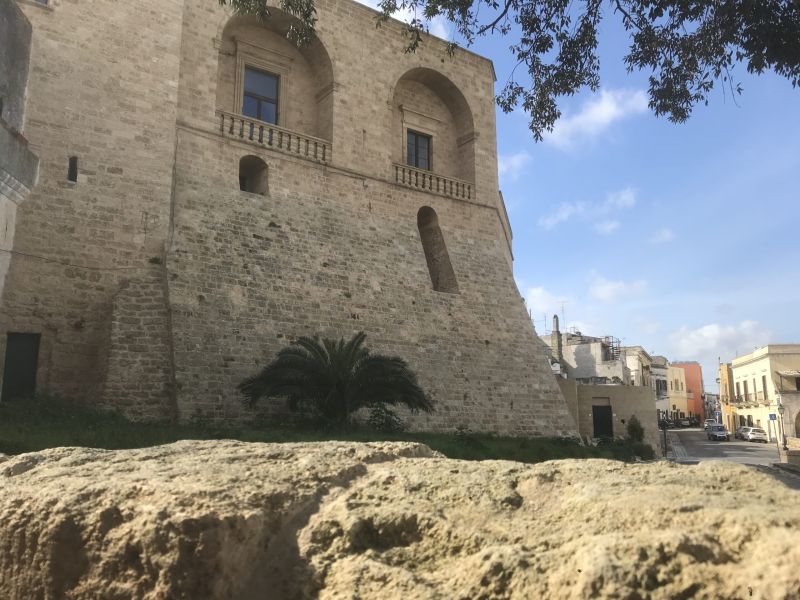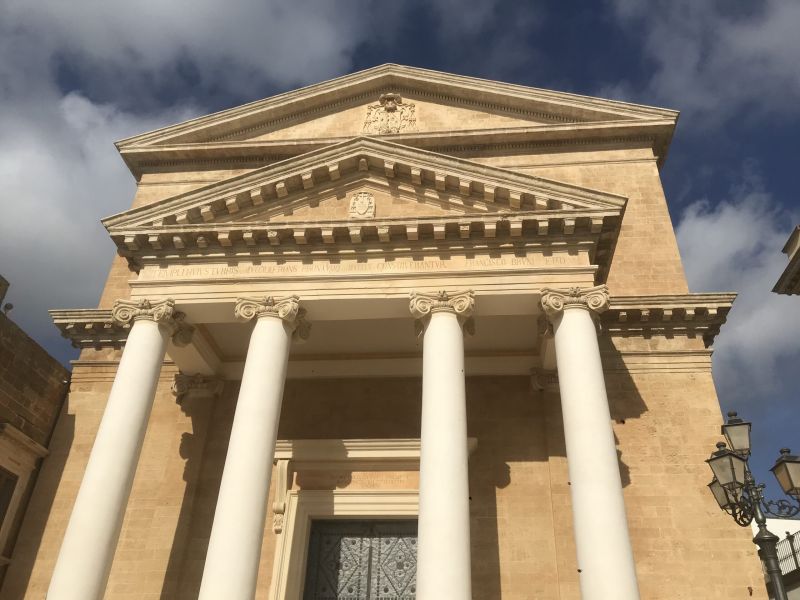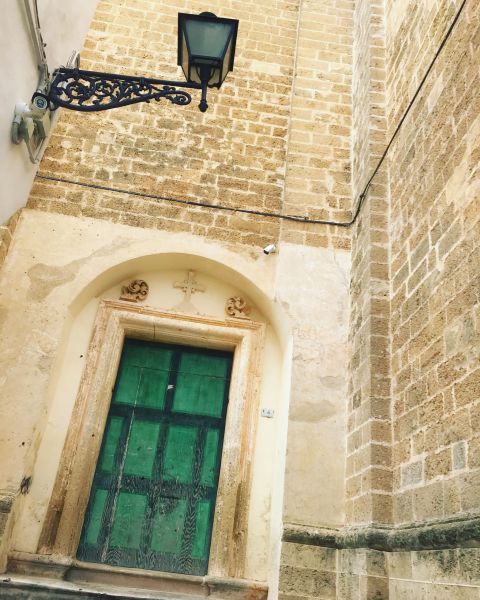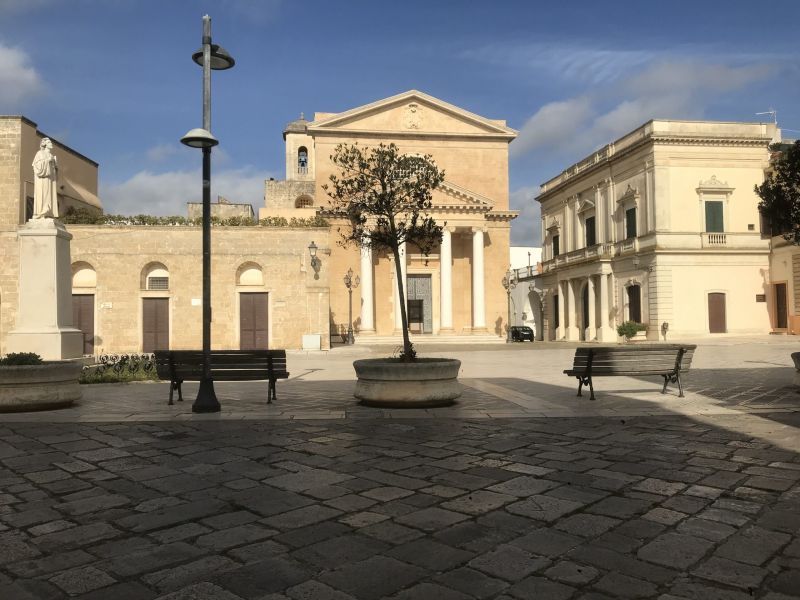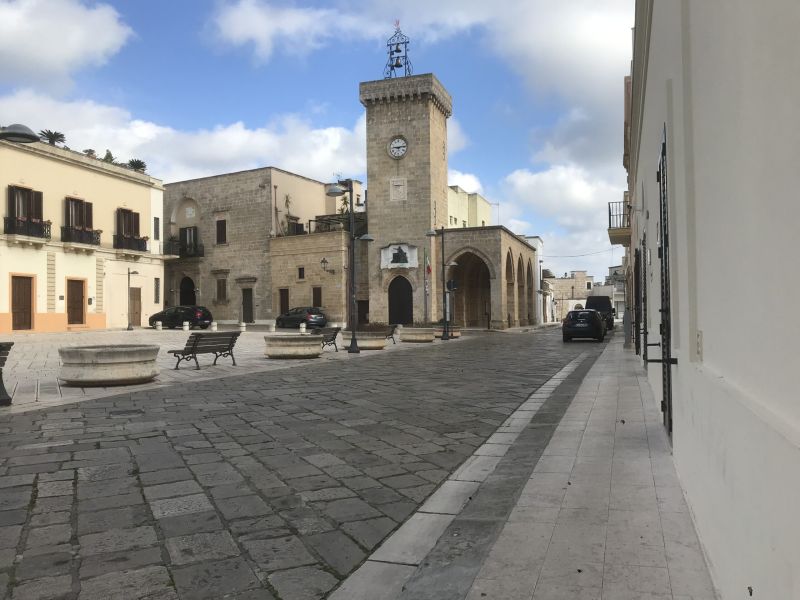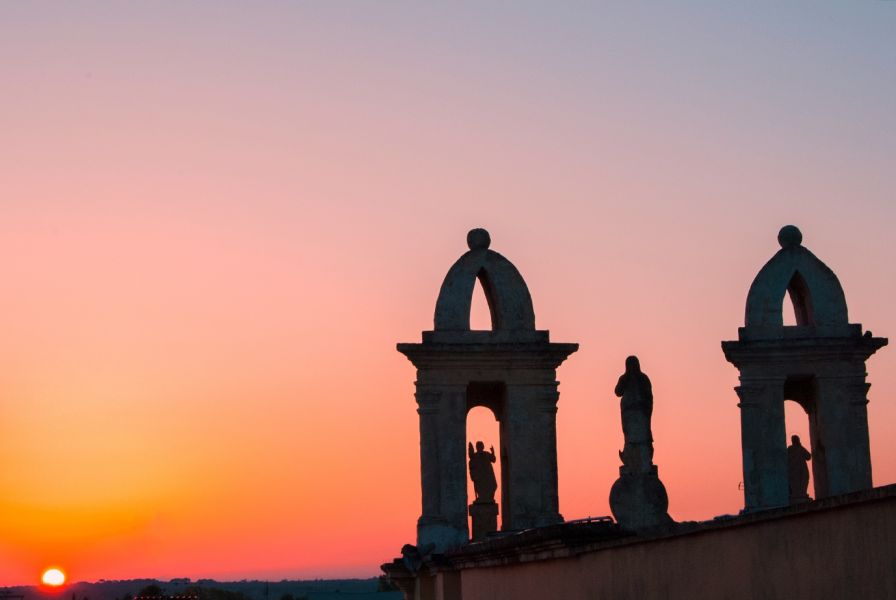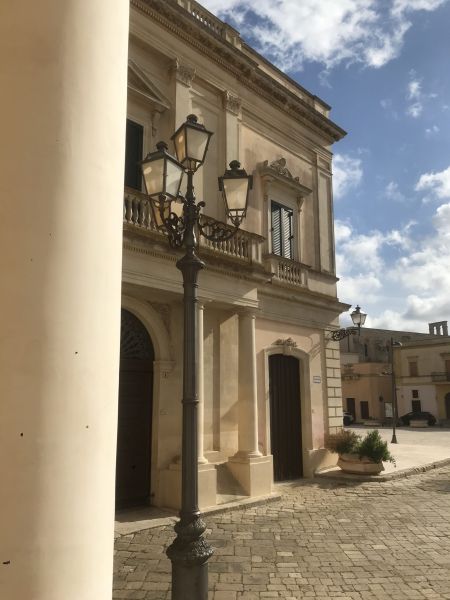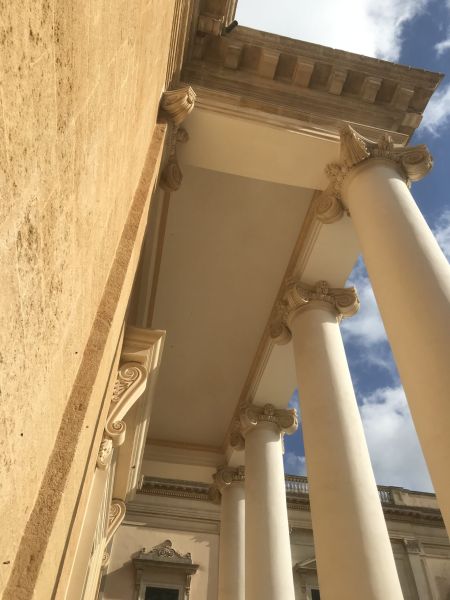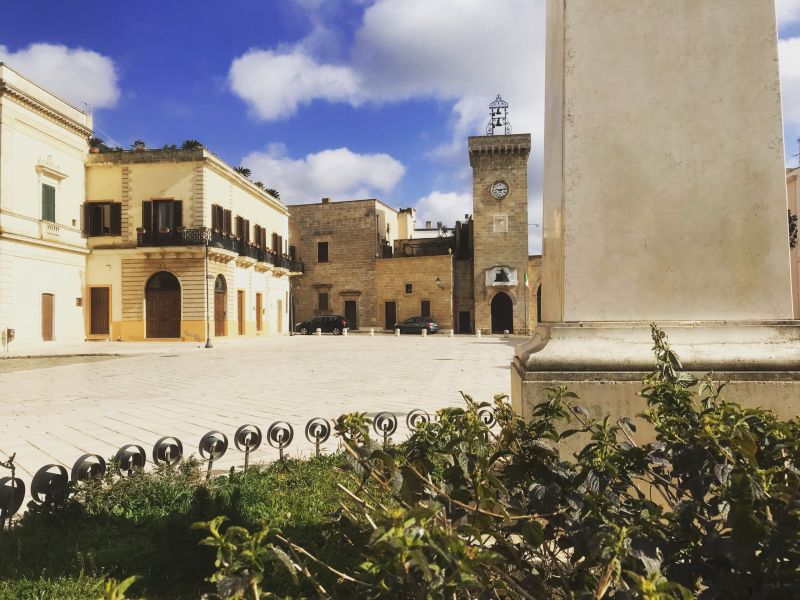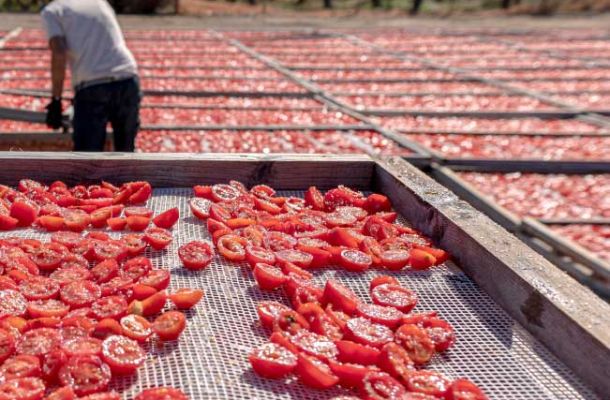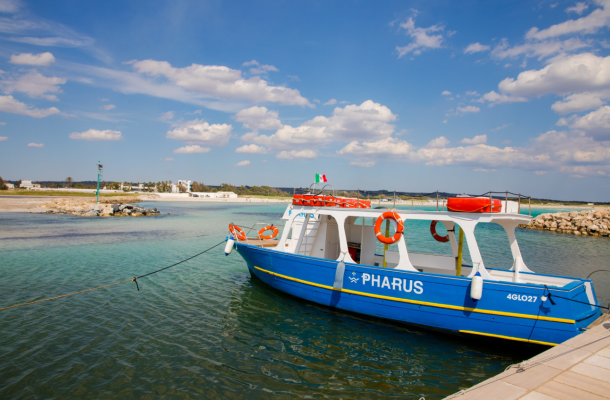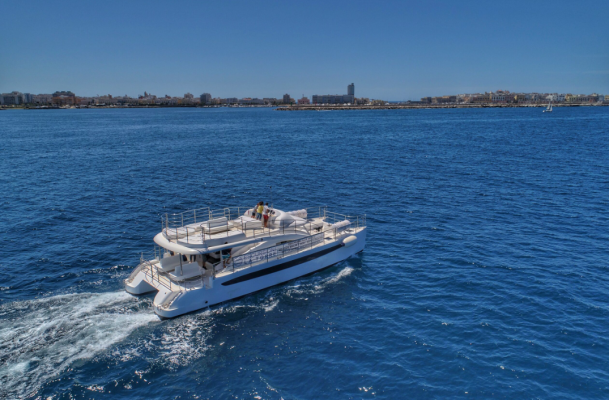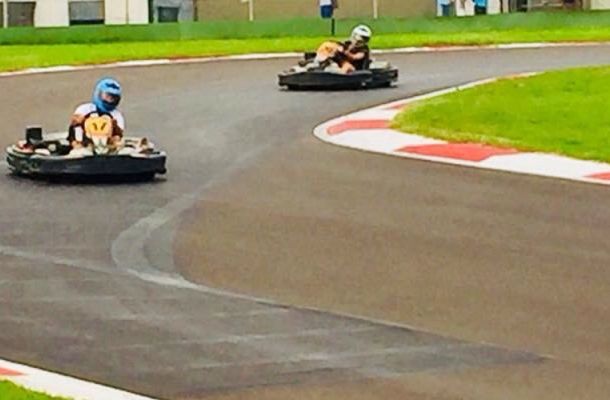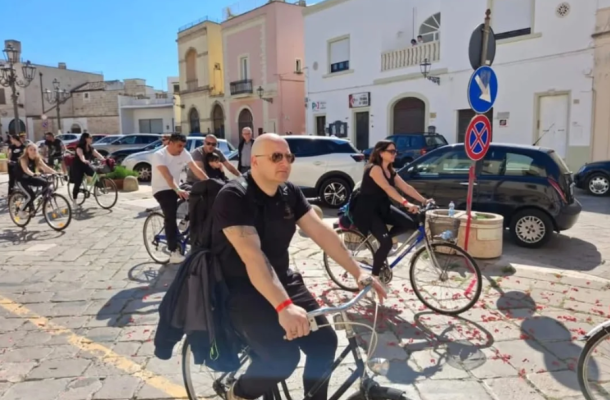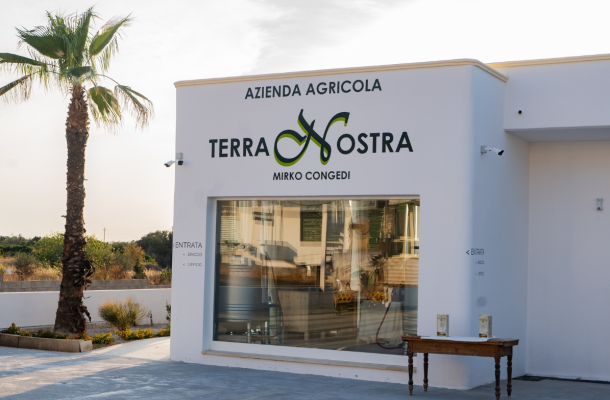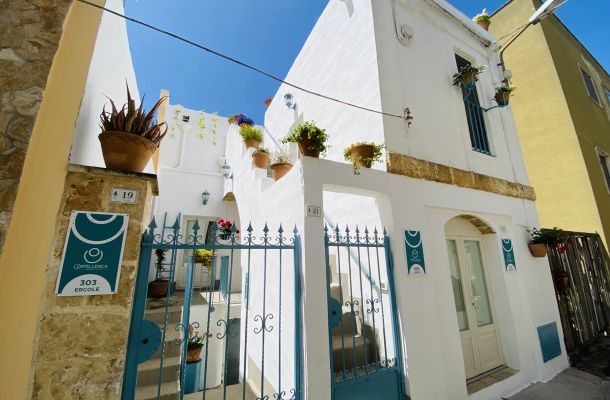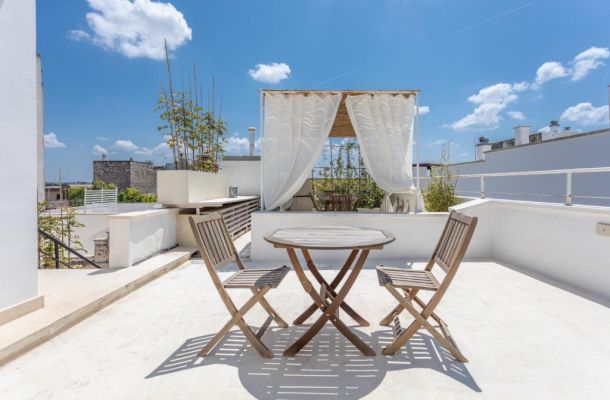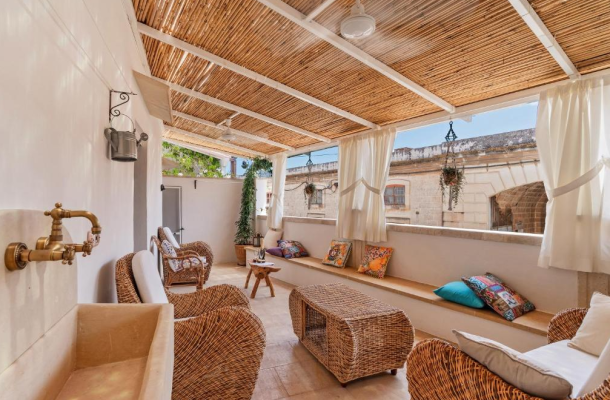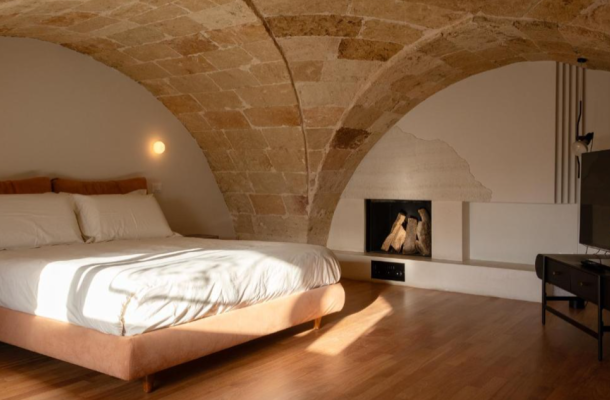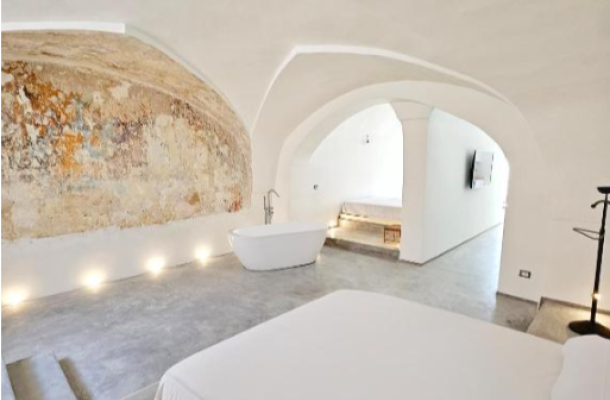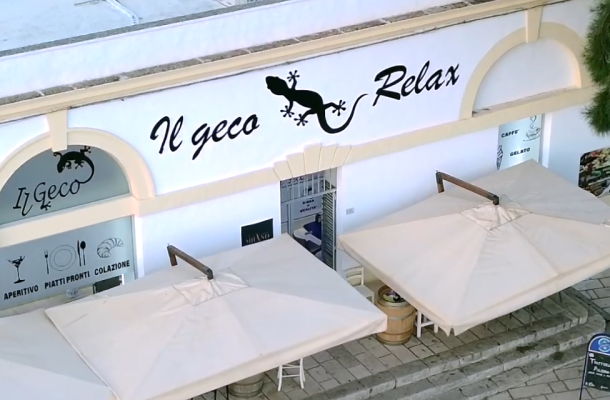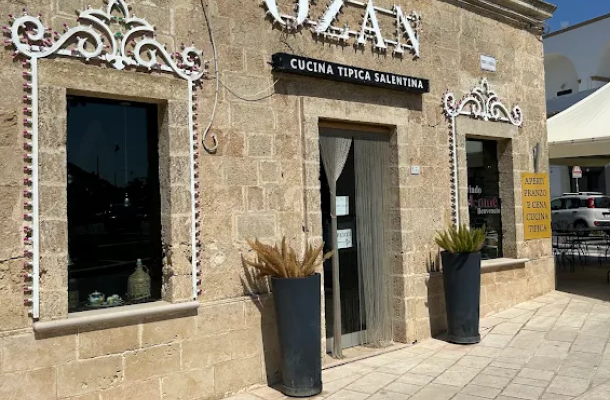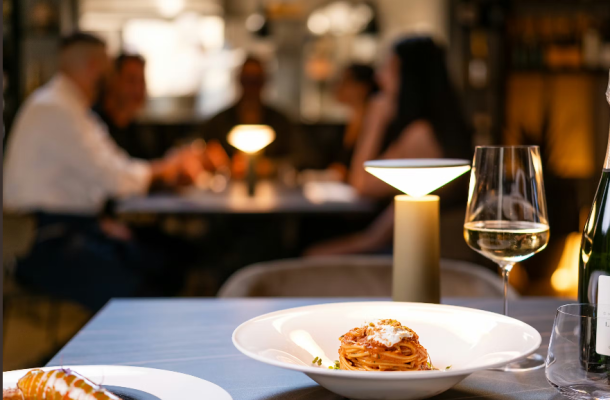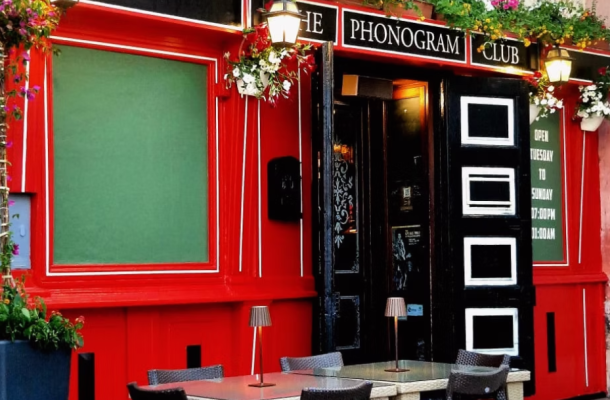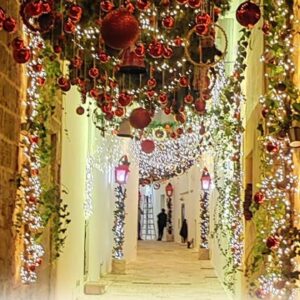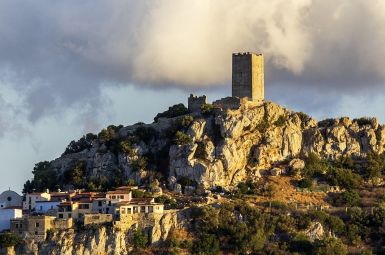
Il Borgo di Ugento
Il Cuore Pulsante dello Ionio: Dove la Storia Messapica Incontra la Bellezza Incontaminata del Salento.
Frazione marina del comune di Ugento, Torre San Giovanni è una delle località più affascinanti e versatili del Salento. Un tempo antico scalo commerciale della città messapica di Uxentum, oggi si presenta come un mosaico perfetto di natura selvaggia, archeologia costiera e ospitalità mediterranea.
1. La Torre Faro: L’Icona a Scacchi
Il monumento che dà il nome alla località e ne definisce l’orizzonte è una delle vedette più spettacolari di Puglia.
-
La Sentinella di Carlo V: Edificata nel XVI secolo per difendere il territorio dalle incursioni saracene, la Torre di San Giovanni è unica nel suo genere. La sua particolarissima decorazione a scacchi bianchi e neri, aggiunta in epoca successiva per fungere da faro e segnale marittimo, la rende un punto di riferimento inconfondibile per i naviganti e il simbolo fotografico della marina.
2. Le Due Anime della Costa: Scoglio e Sabbia
Torre San Giovanni offre un paesaggio duale che accontenta ogni amante del mare.
-
Il Versante Nord: Caratterizzato da una bassa scogliera di roccia vulcanica e scura, ideale per lo snorkeling e per chi cerca acque profonde e limpide in un contesto più intimo.
-
Il Versante Sud: Un’immensa distesa di sabbia finissima e bianca, bordata da dune secolari e una rigogliosa pineta. Qui il fondale digrada dolcemente, regalando sfumature turchesi che nulla hanno da invidiare ai Caraibi.
3. Il Porto Antico: Una Storia di 2500 Anni
Sotto il pelo dell’acqua e lungo le banchine si nasconde l’anima commerciale del borgo.
-
L’Eredità Messapica: Il porto di Torre San Giovanni non è solo un approdo turistico moderno. Studi archeologici hanno confermato che questo era il porto dell’antica Ugento, una delle città più potenti dell’epoca messapica. Camminando lungo il molo, si respira la storia di millenni di scambi tra l’entroterra pugliese e il resto del Mediterraneo.
4. Il Parco Naturale Litorale di Ugento
La frazione è la porta d’accesso a un ecosistema protetto di inestimabile valore.
-
Tra Bacini e Macchia Mediterranea: Il territorio è parte integrante del Parco Naturale Regionale, un’area che protegge una successione unica di dune, zone umide (i bacini) e pinete. È un paradiso per il birdwatching e per chi desidera passeggiare immerso nei profumi del mirto, del lentisco e del rosmarino selvatico.
Torre San Giovanni non è solo una destinazione balneare, ma un’esperienza sensoriale completa: il bianco della sabbia, il nero della storia e l’azzurro infinito dello Ionio.
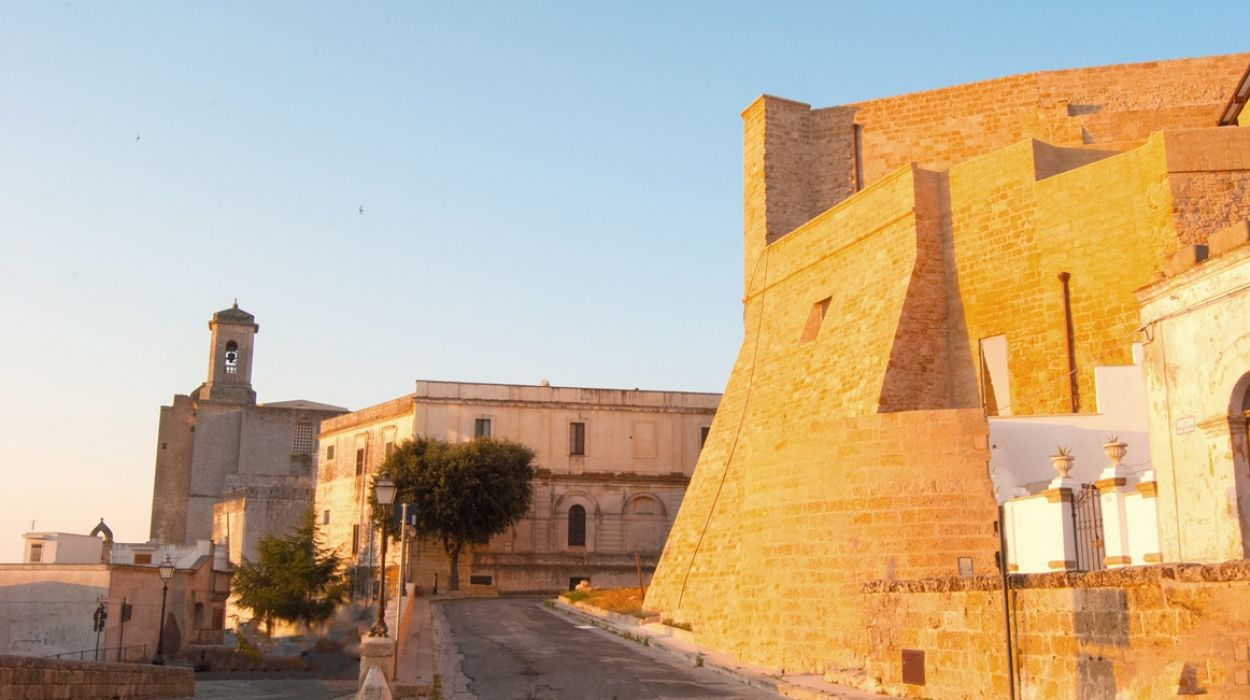
Il Borgo d’Italia
tutto da scoprire ed esplorare
Guarda il video
di presentazione
Monumenti
La storia
Raccontare di Ugento significa narrare una storia al confine con la mitologia. Le tracce del passato emergono negli scavi della Ugento di oggi, ma mancano ancora molti tasselli per completare il quadro delle sue origini. I megaliti che si incontrano sul territorio ci parlano di insediamenti preistorici, mentre le monete conservate al museo civico narrano di una città-stato che aveva una sua zecca e batteva moneta. Al tempo dei Messapi Ugento era Ozan, una città così potente da competere con Taranto. Ozan poggiava le basi della sua ricchezza sul mare, vennero costruiti i primi porti e si rafforzarono le navigazioni e i commerci. Gli intensi scambi con Taranto portarono la cultura della Magna Grecia ad Ugento, appartiene a questo periodo la statua di Zeus ritrovata sul territorio ugentino, motivo d’orgoglio della città.
Quando i Romani giunsero in Salento, per Ugento iniziò un periodo di cadenza. Uxentum, questo era il suo nuovo nome, non è mai riuscita a digerire la cultura della grande Roma.
Ugento ha conosciuto la brutalità dei saccheggi e delle scorribande turche, che hanno distrutto il paese. Coloro che con fatica sono riusciti a resistere sono ripartiti dalle rovine dei monumenti distrutti e dalle mura abbattute, con i loro resti hanno costruito delle nuove case.
Con i normanni Ugento ha alzato nuovamente la testa: dove sorgeva il castro romano viene costruito un castello che aveva lo scopo di difendere la città e le persone che erano scappate nella vicina Gemini rientrano nel borgo, portando un aumento di popolazione.
Ugento ha saputo riorganizzare la sua vita cittadina, ha attraversato il Medioevo traghettandosi tra i diversi signori feudatari: i D’Acquisto che l’hanno colmata di tasse insensate e i D’Amore che le hanno donato lusso e fasti.
Oggi la lunga biografia di Ugento è scritta tra le sue strade e per il borgo, con nobiltà la città mostra e custodisce ciò che ha ereditato dalle sue travagliate vicende.
La Cattedrale
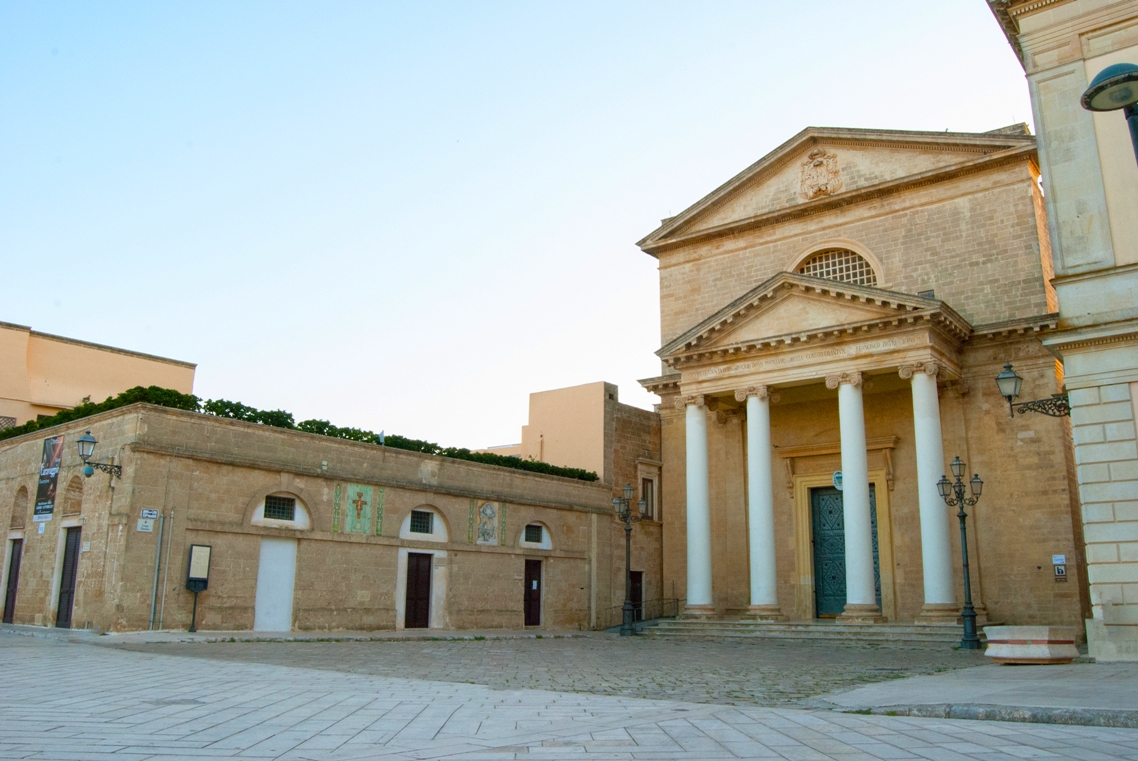 Nel 1880 Ugento venne travolta dall’idea di abbattere una parte del centro abitato per far posto a quella che oggi è piazza San Vincenzo. La piazza è dominata dall’imponenza della Cattedrale, costruita nel ‘Settecento e testimone della grandiosità di una delle più antiche sedi vescovili del Sud Italia.La facciata della cattedrale è in stile neo classico, con colonne che si adattano bene al gusto ellenistico, così come la desiderava il vescovo.Pesanti rimaneggiamenti hanno portato la cattedrale ad un periodo buio, a causa della pittura grigia con cui sono stati rivestiti tutti gli interni. Oggi grazie alle recenti ristrutturazioni, la chiesa sta mostrando il suo splendore originale; entrando dalle porte laterali colpisce l’esplosione di colore, dagli altari barocchi sono riemerse le vivaci tonalità autentiche e tutto sta tornando a risplendere di luce e armonia.
Nel 1880 Ugento venne travolta dall’idea di abbattere una parte del centro abitato per far posto a quella che oggi è piazza San Vincenzo. La piazza è dominata dall’imponenza della Cattedrale, costruita nel ‘Settecento e testimone della grandiosità di una delle più antiche sedi vescovili del Sud Italia.La facciata della cattedrale è in stile neo classico, con colonne che si adattano bene al gusto ellenistico, così come la desiderava il vescovo.Pesanti rimaneggiamenti hanno portato la cattedrale ad un periodo buio, a causa della pittura grigia con cui sono stati rivestiti tutti gli interni. Oggi grazie alle recenti ristrutturazioni, la chiesa sta mostrando il suo splendore originale; entrando dalle porte laterali colpisce l’esplosione di colore, dagli altari barocchi sono riemerse le vivaci tonalità autentiche e tutto sta tornando a risplendere di luce e armonia.
Il Castello
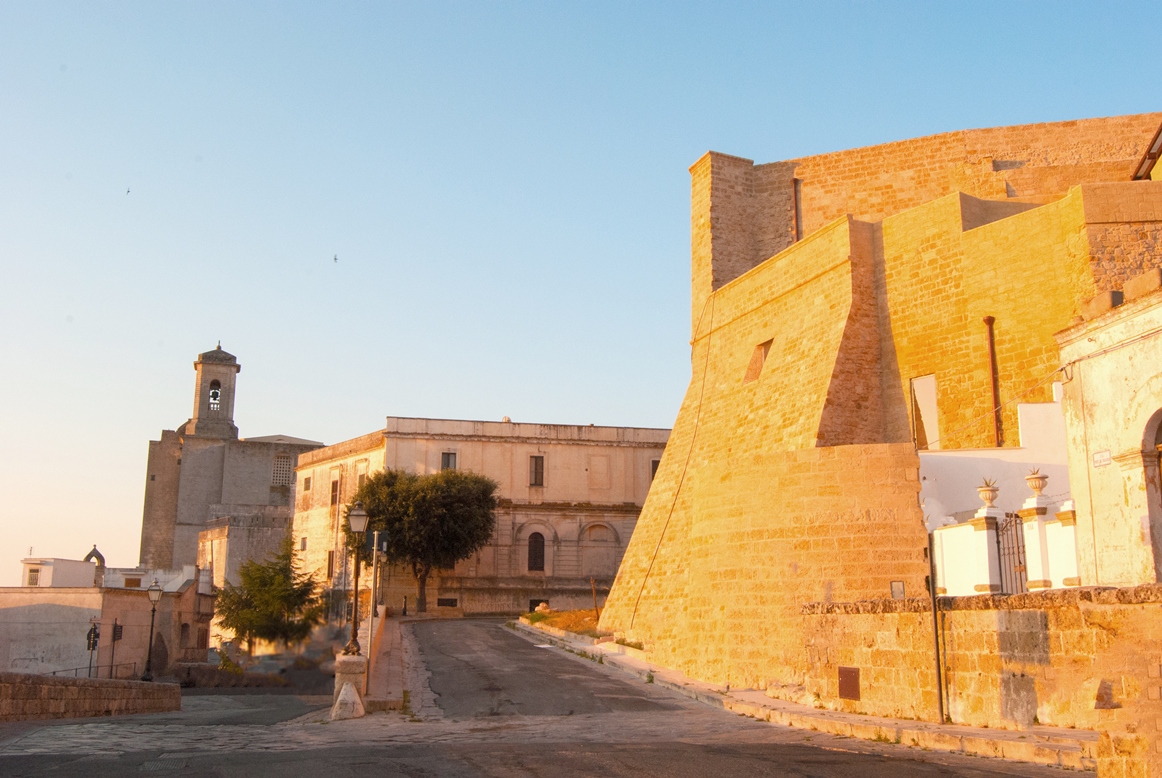 Dalla sua altura il castello domina l’intero borgo e accoglie i visitatori che vengono dal versante nord-ovest. La sua posizione non è casuale, i Normanni lo fecero costruire nello stesso luogo in cui prima c’era un castro romano, perché da quel punto era facile controllare la venuta di nuove genti. Il castello di Ugento nasce quindi con una funzione di difesa, ed è evidente dalla maestosità del suo aspetto e dalle linee rigide che il tempo gli ha lasciato. I marchesi d’Amore smussarono i tratti austeri del palazzo e lo addolcirono con cornicioni decorati ed eleganti decorazioni. Gli ambienti di rappresentanza vennero ampliati e con essi il lusso entro a far parte del palazzo, anche grazie ai dipinti a tema mitologico.
Dalla sua altura il castello domina l’intero borgo e accoglie i visitatori che vengono dal versante nord-ovest. La sua posizione non è casuale, i Normanni lo fecero costruire nello stesso luogo in cui prima c’era un castro romano, perché da quel punto era facile controllare la venuta di nuove genti. Il castello di Ugento nasce quindi con una funzione di difesa, ed è evidente dalla maestosità del suo aspetto e dalle linee rigide che il tempo gli ha lasciato. I marchesi d’Amore smussarono i tratti austeri del palazzo e lo addolcirono con cornicioni decorati ed eleganti decorazioni. Gli ambienti di rappresentanza vennero ampliati e con essi il lusso entro a far parte del palazzo, anche grazie ai dipinti a tema mitologico.
Cripta del Crocefisso
 Fuori dal centro abitato, sulla strada che conduce a Melissano, si trova la Cripta del Crocefisso che con molta probabilità risale al periodo messapico. Questo è sicuramente il sito più controverso della storia di Ugento, che ancora oggi colpisce e fa discutere gli studiosi. La volta dell’ipogeo è infatti interamente affrescata, niente di strano fin qui, se non fosse che gli affreschi raffigurano immagini esoteriche e simboli di un passato di persecuzioni, legato all’epoca romana. Animali fantastici popolano la volta di questa cripta, insieme a fiori, frutti, stelle a sei e ad otto punte e anche scudi crociati rossi e neri che rimandano ai templari e ai cavalieri. Ancora oggi la Cripta del Crocefisso rimane un mistero per molti e porta continuamente gli studiosi a formulare nuove ipotesi.
Fuori dal centro abitato, sulla strada che conduce a Melissano, si trova la Cripta del Crocefisso che con molta probabilità risale al periodo messapico. Questo è sicuramente il sito più controverso della storia di Ugento, che ancora oggi colpisce e fa discutere gli studiosi. La volta dell’ipogeo è infatti interamente affrescata, niente di strano fin qui, se non fosse che gli affreschi raffigurano immagini esoteriche e simboli di un passato di persecuzioni, legato all’epoca romana. Animali fantastici popolano la volta di questa cripta, insieme a fiori, frutti, stelle a sei e ad otto punte e anche scudi crociati rossi e neri che rimandano ai templari e ai cavalieri. Ancora oggi la Cripta del Crocefisso rimane un mistero per molti e porta continuamente gli studiosi a formulare nuove ipotesi.
Musei
 Ogni qualvolta ad Ugento si scava per lavori s’incappa sempre in nuovi ritrovamenti. La storia millenaria di questo borgo parla attraverso i reperti storici ritrovati nel corso dei secoli. Il più grande collezionista di testimonianze storiche è stato il barone Adolfo Colosso, il cittadino più illustre di Ugento, che ha cavallo tra il Milleottocento e il Millenovecento ha messo insieme quasi ottocento reperti di epoca antica ritrovati nel territorio di Ugento. A questi si devono aggiungere altri pezzi di età moderna. La Collezione Colosso è una delle più importanti del Salento, oggi il palazzo baronale ospita la collezione ed è stato istituito il Museo “Adolfo Colosso”. Il Museo Civico Archeologico di Ugento si trova invece nell’ex convento dei Frati Minori Osservanti, uno dei più importanti palazzi del centro storico. L’edificio racconta da solo una propria storia: infatti ha ospitato i frati fino a metà ‘Ottocento, cioè fino a quando è diventato di proprietà dello stato e di conseguenza del comune. Negli anni Sessanta del ‘Novecento, Ugento ha sentito la necessità di riunire i suoi ritrovamenti in un unico luogo e quale miglior posto del convento? Si trovano nel Museo Civico importanti pezzi storici, come le antiche monete di Ugento, testimonianza della zecca dell’epoca e una copia dello Zeus Stilita. Le testimonianze della spiritualità della città si trovano nel museo diocesano che custodisce calici in oro, antichi messali, statue in cartapesta, ma anche tele, ceramiche e tessuti pregiati. L’ambiente è denso di misticità e carico di significato.
Ogni qualvolta ad Ugento si scava per lavori s’incappa sempre in nuovi ritrovamenti. La storia millenaria di questo borgo parla attraverso i reperti storici ritrovati nel corso dei secoli. Il più grande collezionista di testimonianze storiche è stato il barone Adolfo Colosso, il cittadino più illustre di Ugento, che ha cavallo tra il Milleottocento e il Millenovecento ha messo insieme quasi ottocento reperti di epoca antica ritrovati nel territorio di Ugento. A questi si devono aggiungere altri pezzi di età moderna. La Collezione Colosso è una delle più importanti del Salento, oggi il palazzo baronale ospita la collezione ed è stato istituito il Museo “Adolfo Colosso”. Il Museo Civico Archeologico di Ugento si trova invece nell’ex convento dei Frati Minori Osservanti, uno dei più importanti palazzi del centro storico. L’edificio racconta da solo una propria storia: infatti ha ospitato i frati fino a metà ‘Ottocento, cioè fino a quando è diventato di proprietà dello stato e di conseguenza del comune. Negli anni Sessanta del ‘Novecento, Ugento ha sentito la necessità di riunire i suoi ritrovamenti in un unico luogo e quale miglior posto del convento? Si trovano nel Museo Civico importanti pezzi storici, come le antiche monete di Ugento, testimonianza della zecca dell’epoca e una copia dello Zeus Stilita. Le testimonianze della spiritualità della città si trovano nel museo diocesano che custodisce calici in oro, antichi messali, statue in cartapesta, ma anche tele, ceramiche e tessuti pregiati. L’ambiente è denso di misticità e carico di significato.
Lo Zeus Stilita
 È difficile immaginare la faccia dei maestri costruttori che all’opera per lo scavo di nuove fondamenta, sono incappati nella statua di un dio greco. Chissà se hanno immaginato di essere davanti ad una delle scoperte più importanti della storia di Ugento. Lo Zeus per secoli ha riposato in una buca, protetto da un masso che in origine era il suo capitello. È raro trovare una statua in bronzo risalente al 500 a.C. che è giunta a noi in uno stato di conservazione ottimo.
È difficile immaginare la faccia dei maestri costruttori che all’opera per lo scavo di nuove fondamenta, sono incappati nella statua di un dio greco. Chissà se hanno immaginato di essere davanti ad una delle scoperte più importanti della storia di Ugento. Lo Zeus per secoli ha riposato in una buca, protetto da un masso che in origine era il suo capitello. È raro trovare una statua in bronzo risalente al 500 a.C. che è giunta a noi in uno stato di conservazione ottimo.
Zeus Stilita è una divinità fiera, che avanza verso il suo popolo, con una saetta in una mano e un’aquila nell’altra. Il suo atteggiamento orgoglioso incarna perfettamente l’importanza che questa statua ricopre, questa divinità è il simbolo della grande Ugento, dello splendore di una città potente e ricca che intratteneva scambi commerciali con la spartana Taranto.
La statua originale di Zeus è conservata al museo di Taranto, al Museo Civico di Ugento si può ammirare la sua copia perfetta.
Curiosità
Le Secche
Le secche di Ugento si estendono per quasi quattro km e collegano la marina di Torre Mozza a quella di Torre Pali. Nel corso dei secoli hanno causato numerosi naufragi, anche di personaggi illustri, come Pirro che mentre accorreva in soccorso di Taranto, è incappato nelle secche che hanno bloccato la sua corsa, oppure il naufragio del mercantile Liesen, che ancora oggi riposa sul fondo del mare ed è diventato una vera e propria meta turistica per i sommozzatori.
Tra le secche ugentine affiorano sul pelo dell’acqua lo scoglio del Cavallo, quello della Giumenca e quello del Puledro. Nomi insoliti che s’intrecciano alle scorribande turche e ad una leggenda.
I Saraceni, dopo aver saccheggiato Castrignano del Capo e altri paesi, stavano ritornando al vascello, quando sul loro cammino incontrarono un pastore anziano e i suoi tre cavalli, era una preda così facile che s’affrettarono a catturarlo e a rinchiuderlo nella stiva.
Le loro scorribande per il Capo di Leuca gli avevano fruttato un bottino ricco e presi dall’euforia iniziarono una festa bagnata dal vino che erano riusciti a sottrarre. Nessuno dei saraceni rinunciò a bere e finirono per ubriacarsi e poi per addormentarsi, senza sentire la tempesta che si avvicinava. Quando si svegliarono, erano tutti troppo impegnati a salvarsi e non si preoccuparono certo del prigioniero nella stiva. L’uomo sembrava diretto verso la morte certa, quando ad un tratto le catene si spezzarono e il pastore si precipitò a correre sul ponte, si attaccò all’albero di poppa e lì rimase tutta la notte mentre la nave scivolava verso le secche. Nessuno dei turchi riuscì a superare la tempesta, i pescatori all’alba trovarono l’uomo ancora attaccato all’albero e i suoi tre cavalli in piedi, ognuno su uno scoglio.
“Ugento, senza fede nè sacramento”
Erano i primi anni del ‘Settecento, la cattedrale di Ugento era stata da poco terminata ma tardava ad essere aperta al culto. Il vescovo, un uomo burbero e scontroso, aveva commissionato una campana per la nuova chiesa. Era costruita con materiali pregiati, che al tocco restituivano un suono dolce e melodioso.
Nonostante il vescovo chiedesse di continuo una cerimonia che inaugurasse la nuova chiesa, per un motivo o per l’altro si continuava a rimandare e la campana restava ferma e si riempiva sempre più di polvere. La pazienza si esaurì e il vescovo decise di donare la campana alla chiesa di Altamura, che nel frattempo era stata inaugurata. Per Ugento fu un affronto intollerabile, il popolo e il clero si schierarono compatti contro il vescovo e non esitavano a fargli dispetti e ingiurie che portarono il prelato ad abbandonare la sede vescovile.
Si mise in carrozza, per andare il più lontano possibile, e quando uscì fuori dal paese, all’altezza del santuario della Madonna della Luce, scese e si spolverò le scarpe per lasciarsi dietro qualsiasi cosa fosse legata a quel luogo, e pieno di rancore, disse:
“Ugento, senza fede né sacramento.”
Personaggi
Adolfo Colosso
Adolfo Colosso resta ancora oggi uno degli uomini più amati di Ugento e sicuramente può essere considerato il suo cittadino più illustre.
È nato l’11 agosto 1854 ad Ugento, dopo i primi studi venne mandato per volere paterno a conseguire la maturità classica a Lecce e successivamente decise di iscriversi presso la Scuola d’Agricoltura di Portici. Gli anni trascorsi in Campania furono particolarmente fecondi per la sua cultura, il giovane Adolfo infatti amava leggere libri e studiare.
Dopo aver conseguito la laurea nel 1880 rientrò ad Ugento e iniziò a lavorare presso l’azienda di famiglia. In pochi anni, grazie ai suoi studi, riuscì ad innovare l’azienda modificando la rotazione delle colture e introducendo nuovi macchinari agricoli.
Adolfo Colosso è stato anche parte integrante della vita pubblica cittadina. A partire dal 1889 rappresentò il Mandamento di Ugento nel Consiglio Provinciale, riuscendo poi ad ottenere altre cariche grazie anche alla fiducia che ininterrottamente riposero in lui i suoi elettori.
Nel 1901 venne a mancare il fratello Massimo, che allora era sindaco di Ugento, e per volere del Consiglio Comunale Adolfo ricoprì la carica rimasta vacante.
Anche come amministratore cittadino Adolfo Colosso riuscì a portare a termine importanti progetti, riuscendo a risolvere problemi e portando ad Ugento numerosi servizi pubblici.
Oltre a tutto questo Adolfo Colosso è ricordato nel suo paese natale per il grande apporto dato come collezionista di reperti archeologici. La sua collezione, per anni rimasta chiusa tra le mura del palazzo baronale di famiglia, è stata di recente messa a disposizione del pubblico, grazie all’istituzione del Museo ‘Adolfo Colosso’.
Il 14 novembre 1915, mentre era in gita con la famiglia venne colto da un attacco cardiaco e morì poche ore dopo, all’età di settantuno anni.
______________________________________
Conosci altri personaggi illustri di questo borgo? Contattaci!
Ricette Tipiche
Ciciri e tria
Una delle ricette più antiche legata alla tradizione gastronomica Salentina. Già menzionata dal poeta latino Orazio, che decantava una minestra composta da ceci, porro e lasagne,questo tipo di pasta si è diffusa nel Salento con il nome di “Tria”, derivata dalla parola araba “itriyah” (pasta secca).
Un piatto povero ma molto gustoso, preparato durante tutto l’anno il cui ingrediente principale sono i ceci; la pasta “Tria” si prepara semplicemente con semola di grano e acqua, il tutto è insaporito da una parte di pasta che viene fritta i “frizzuli” in olio extravergine di oliva .
Se non avete tempo di preparare la pasta in casa potete comprare delle tagliatelle fresche o utilizzare della pasta secca di forma simile.
Gli ingredienti:
300 gr. di ceci secchi
1 cucchiaino di bicarbonato
sale grosso (due manciate circa)
peperoncino o pepe
sale
1 cipolla
4 foglie di alloro
olio extravergine di oliva
per la “Tria”:
500 gr di farina (semola di grano duro)
1 cucchiaino di sale
acqua q.b.
Preparazione dei ceci
Prendete i ceci secchi versateli in un contenitore, aggiungete un cucchiaino di bicarbonato, una manciata di sale grosso, versate un pò di acqua e strofinateli con le mani. Ricoprite con abbondante acqua e lasciateli in ammollo per tutta la notte (almeno 12h). La mattina dopo eliminate l’acqua, lavateli e versate i ceci in una pentola, ricoprite completamente con acqua fresca e iniziate la cottura. In un pentolino, da tenere sempre sul fuoco, versate una manciata di sale grosso insieme all’acqua che servirà per la cottura. Quando i ceci arriveranno a bollitura, togliete l’acqua che si presenterà piena di schiuma e aggiungete quella calda del pentolino. Unite nella pentola una cipolla bianca tagliata a pezzi e tre foglie di alloro. La cottura dovrà proseguire per circa 1h, abbiate cura di tenere sempre i ceci ben coperti con acqua. Quindi aggiungete, se necessario, sempre acqua calda.
Preparazione dell pasta fresca “Tria”.
Versate su un piano da lavoro la farina, formate una fontana e al centro aggiungete dell’acqua insieme ad un cucchiaino di sale fino. Iniziate ad impastare. Regolatevi se aggiungere altra acqua, l’impasto dovrà risultare morbido e liscio. Lavorate l’impasto fino a quando non sarà elastico. Con dei movimenti rotatori della mano formate una palla. Ecco l’impasto liscio e morbido. Copritelo con della farina e lasciate risposare per almeno 1h. Cominciate a stendere la pasta con un mattarello. Stendete la sfoglia formando un cerchio non molto sottile. Iniziate a piegare la pasta su se stessa, spolverate con abbondante farina prima di ogni passaggio per evitare che i vari strati si possano appiccicare tra di loro. Tagliate le estremità della pasta in modo da formare un rettangolo. Con una rondella tagliate delle fettuccine, larghe pochi mm. Appena terminata questa operazione sciogliete subito la pasta e infarinate.Ponetela sul piano di lavoro e lasciate asciugare per un paio di ore.Ricordatevi di mettere da parte della pasta, magari i ritagli e le fettuccine più piccole, andranno poi fritte. Come quantità circa una manciata abbondante.Prendete i ceci cotti, eliminate la cipolla e lasciate un pò del brodo di cottura.
Preparazione della pasta fritta “frizzuli”
In un pentolino versate dell’olio extravergine d’oliva, riscaldatelo con due peperoncini, la quantità decidetela voi in base a quanto amate il piccante. Versate nell’olio la pasta messa da parte insieme ad una foglia di alloro.
Friggetela sino a che non sarà dorata, ed ecco pronti i “frizzuli”.Intanto preparate una pentola con acqua e sale. Accendete il fornello e portate a bollore, versate le tagliatelle e cucinatela per pochi minuti. Quando le vedrete emergere in superficie togliete dal fuoco. Eliminate l’acqua di cottura, lasciatene giusto poca sul fondo della pentola. Riportate sul fornello a fiamma bassa. Versate i ceci e il loro brodo di cottura, mescolate. Aggiungete anche la pasta fritta “frizzuli” con tutto l’olio e amalgamate bene in modo da insaporire tutta la pasta. Se non avete aromatizzato l’olio con il peperoncino potete a questo punto spolverare leggermente con del pepe macinato fresco. Quando la pasta inizierà ad attaccarsi al fondo della pentola spegnete.
Impiattate e servite.
_________________________________
Conosci altre ricette tipiche di questo borgo? Contattaci!
